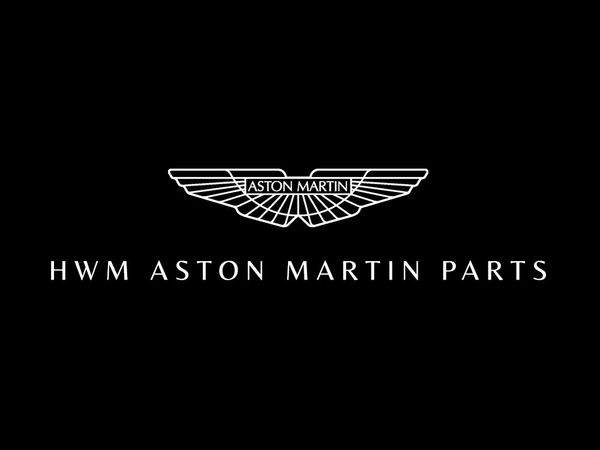The F80 is Ferrari’s new supercar, a car destined to join iconic models from the 1984 GTO to the 2016 LaFerrari Aperta
The F80 is a showcase for the ultimate in technology and performance from the marque, and represents an extreme development of the internal combustion engine
With a combined maximum power of 1200 hp, the V6-hybrid powertrain of the F80 makes it the most powerful road car ever to come out of the gates of the Ferrari factory
A host of advanced technological solutions makes the F80 the new benchmark for innovation and engineering excellence
Ferrari has unveiled the F80 and written a new chapter in the history of legendary supercars bearing the Prancing Horse badge.
The F80 will be produced in a limited run of just 799 examples and joins the pantheon of icons such as the GTO, F40 and LaFerrari by showcasing the best that the Maranello-based marque has achieved in terms of technology and performance.
Ever since 1984, Ferrari has periodically released a new supercar that represented the pinnacle of cutting-edge technology and innovation of its era and that was destined to become enshrined in popular culture. Intended for the most discerning clients of the brand, these cars immediately became legends in their own lifetime, making an indelible mark not only on the history of Ferrari, but on the history of the automobile itself.
The latest addition to this family, the F80, is tasked with embodying the ultimate in engineering for an internal-combustion-engined vehicle and employs all the most advanced technological solutions, including latest-generation hybrid technology for the powertrain, to achieve unparalleled levels of power and torque. Every aspect of the architecture is conceived to maximise performance, from the carbon-fibre chassis and extreme aerodynamic solutions far beyond anything seen before in a road-legal car, to the new active suspension optimised to let the driver wring every ounce of performance from the car on the track.
Unlike anything else in the current supercar world, the F80 combines all these attributes with uncompromising levels of usability on the road, where it can be driven with ease. This ability shaped every choice made in terms of technology and architecture to achieve the goal, which at first sight seems impossible, of creating a track-oriented supercar that’s just as driveable as a production range model.
All this means that the driver will spend even more time in the car and can truly get to know and revel in its performance and the thrilling driving experience it offers. The architecture of the F80 is so extreme that the layout chosen results in a narrower cabin with a driver-centric layout, which nonetheless still offers excellent space and comfort for a passenger. This choice had crucial benefits in terms of minimising drag and weight.
The cockpit area therefore has a distinct single-seater feel, despite the fact that the car is homologated for two occupants, resulting in a architecture that we could call “1+”. The primary reason for this choice was to minimise width, to the benefit of aerodynamics (with less drag) and weight saving. This concept is completely in keeping with the motorsport world from which this car not only draws inspiration but also inherits technological solutions.
As has always been the case with the Ferrari supercars preceding the F80, the powertrain is based on the finest expression of technology in motorsport. The GTO and F40 were powered by a turbo V8, because Formula 1 cars used turbocharged engines in the 1980s. Today in both Formula 1 and the World Endurance Championship (WEC), powertrains consist of turbo V6 ICE engines mated with an 800 V hybrid system. It was only natural then that this architecture - the same architecture used by the 499P, which has taken two consecutive victories at the 24 Hours of Le Mans - would be transferred into the new F80.
Here though the powertrain is further complemented by the introduction, for the first time ever on a Ferrari, of electric turbo technology (e-turbo), which, with an electric motor installed between the turbine and compressor of each turbo, allows for an extraordinary specific power output and instantaneous response from low down in the rev range.
Aerodynamics play a key role on the F80, with solutions such as the active rear wing, rear diffuser, flat underbody, front triplane wing and S-Duct working in concert to generate 1000 kg of downforce at 250 km/h. This result is further enhanced thanks to the active suspension, which contributes directly to generating ground effect. Performance is boosted by the electric front axle, which brings four-wheel drive capability to make even more effective use of the torque and power on tap, and the new brakes with motorsports-derived CCM-R Plus technology.
As with all the supercars preceding it, the F80 marks the start of a new design era for Ferrari, with a more tense, extreme design language accentuating its race-bred soul. There are clear references to cues borrowed from aerospace, which underscore the cutting-edge technology and elegant engineering of each and every technical solution. But there are also nods to its hallowed progenitors which clearly declare the illustrious lineage of the F80.
Ferrari F80 – Technical data sheet
ENGINE
INTERNAL COMBUSTION ENGINE (ICE)
Type V6 – 120° – dry sump
Total displacement 2992 cc
Bore and stroke 88 mm × 82 mm
Maximum power** 900 cv at 8750 rpm
Maximum torque 850 Nm at 5550 rpm
Maximum engine speed 9000 rpm (dynamic limiter at 9200 rpm)
Compression ratio 9.5:1
Specific power output 300 cv/l
HYBRID POWERTRAIN
Type Concentrated winding stator, Litz wire and stator and rotor in a Halbach array configuration
REAR ELECTRIC MOTOR (MGU-K)
Operating voltage 650 – 860 V
Peak power Regenerative braking: 70 kW (95 cv); ICE assist: 60 kW (81 cv)
Peak torque 45 Nm
Maximum engine speed 30,000 rpm
Weight 8.8 kg
FRONT AXLE ELECTRIC MOTOR
Operating voltage 650 – 860 V
Peak power 105 kW (142 cv) for each of the two electric motors
Peak torque 121 Nm
Maximum engine speed 30,000 rpm
Weight 12.9 kg
HIGH-VOLTAGE BATTERY
Maximum voltage 860 V
Maximum power (charge/discharge) 242 kW
Energy 2.28 kWh
Maximum current 350 A
Power density 6.16 kW/kg
Weight 39.3 kg
WEIGHTS AND DIMENSIONS
Length 4840 mm
Width 2060 mm
Height (in kerb weight conditions) 1138 mm
Wheelbase 2665 mm
Front track 1701 mm
Rear track 1660 mm
Dry weight* 1525 kg
Dry weight/power ratio 1.27 kg/cv
Weight distribution 42.2% front / 57.8% rear
Fuel tank capacity 63.5 litres
Luggage compartment capacity 35 litres
TYRES AND WHEELS
Front 285/30 R20
Rear 345/30 R21
BRAKES
Front 408 x 220 x 38 mm (6 pistons per calliper)
Rear 390 x 263 x 32 mm (4 pistons per calliper)
TRANSMISSION AND GEARBOX
8-speed dual-clutch F1 DCT
ELECTRONIC CONTROLS
SSC 8.0: TC, eDiff, SCM, PCV 3.0, FDE 2.0, EPS, ABS-Evo in all Manettino modes, 6D sensor performance ABS/ABD
PERFORMANCE
Maximum speed 350 km/h
0–100 km/h 2.15 s
0–200 km/h 5.75 s
100-0 km/h 28 m
200-0 km/h 98 m
FUEL CONSUMPTION
Under homologation
CO2 EMISSIONS
Under homologation





















